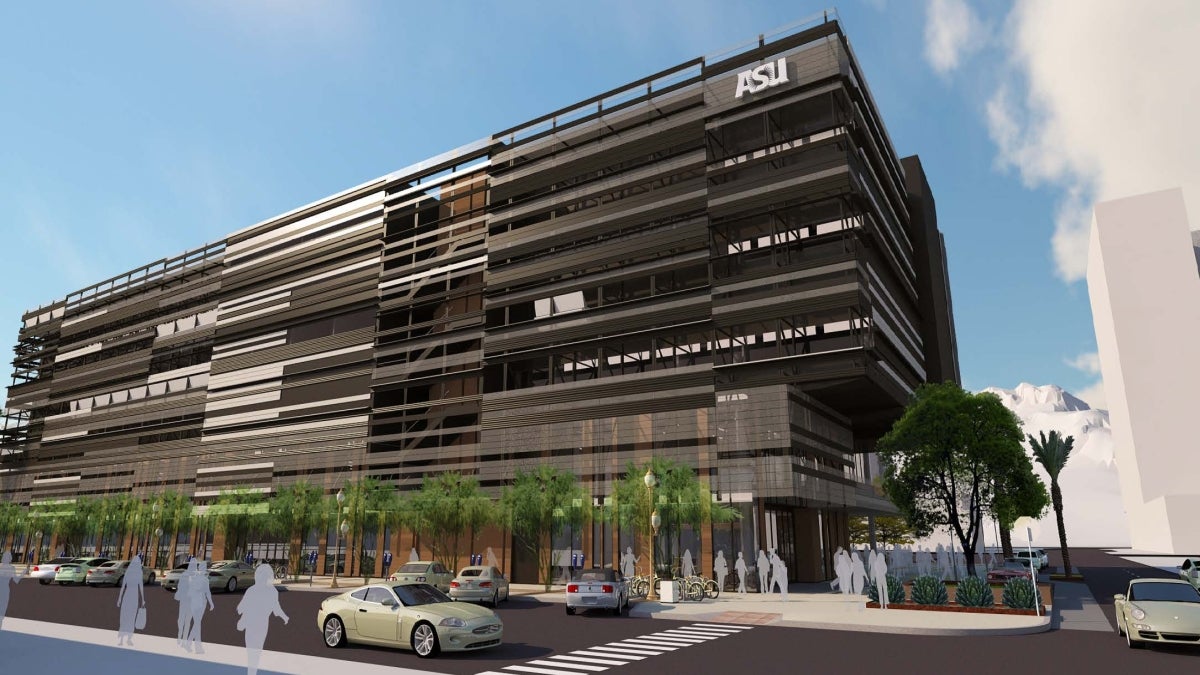New Block 12 project plan expands ASU Tempe campus northward

The ASU Office of the University Architect recently released preliminary concepts for the 130,000-square-foot Block 12 project, which is slated for a LEED silver designation or above from the U.S. Green Building Council.
ASU’s new mixed-use Block 12 project expands the Tempe campus beyond University Drive and includes enhancements to the surrounding areas. The proposed five-story complex carefully was planned to maximize pedestrian activity on the ground level and to tie into the existing campus urban fabric.
The Block 12 project plan encompasses ground-level eateries; a 200-seat auditorium for “Experience ASU” tours that will double as a classroom when not in use for tours; several general classrooms that can support 40, 80 and 120 students; as well as a new home for the Del E. Webb School of Construction.
The development site is bound on the east at College Avenue, Seventh Street on the south, Forest Avenue on the west and Sixth Street on its northern edge. As campus expansion moves northward, ASU planning officials emphasized the importance of “weaving” the design into the core of the campus.
“I believe that Block 12 will engage students with its modern, urban-campus feel,” said Ed Soltero, assistant vice president and university architect at ASU. “The design’s aesthetic beauty enhances the community’s overall experience at a campus entrance, and green materials incorporated into the project further ASU’s commitment to sustainability.”
The Office of the University Architect incorporated sustainable concepts into all aspects of Block 12. Some “green” features under review for implementation include:
• a ventilated façade to reduce exterior surface temperatures
• opportunities for building integrated photovoltaic/solar-thermal technologies
• natural ventilation of atrium spaces
• solar hot water heating for domestic and/or building heat
• LED lighting in some or all areas
• water harvesting for storage and reuse
Additional energy saving initiatives under review for incorporation also exceed requirements beyond those required by the LEED rating system. For instance, small urban plazas on the structure’s perimeter create cooling microenvironments that help to reduce building temperatures and serve as small areas of respite for students and visitors.
Boosting the design’s visual appeal, the palette of materials being considered include a rich terra-cotta rain screen or brick masonry on the lower levels. Upper-level features could encompass an elegant composition of various shades of anodized aluminum panels. The metal skin on the upper levels could act as a solar shading device. A perforated aluminum “skirt” that extends beyond the building’s face at the ground level will provide shade to visitors entering the facility.
Block 12 currently is in the schematic design phase and is scheduled to break ground sometime in January 2013. June 2014 is the target completion date.
“As the complex design continues, the Office of the University Architect clearly sees this project as a significant opportunity to physically exemplify the unification of ASU’s educational mission with its unique campus setting,” Soltero said.

